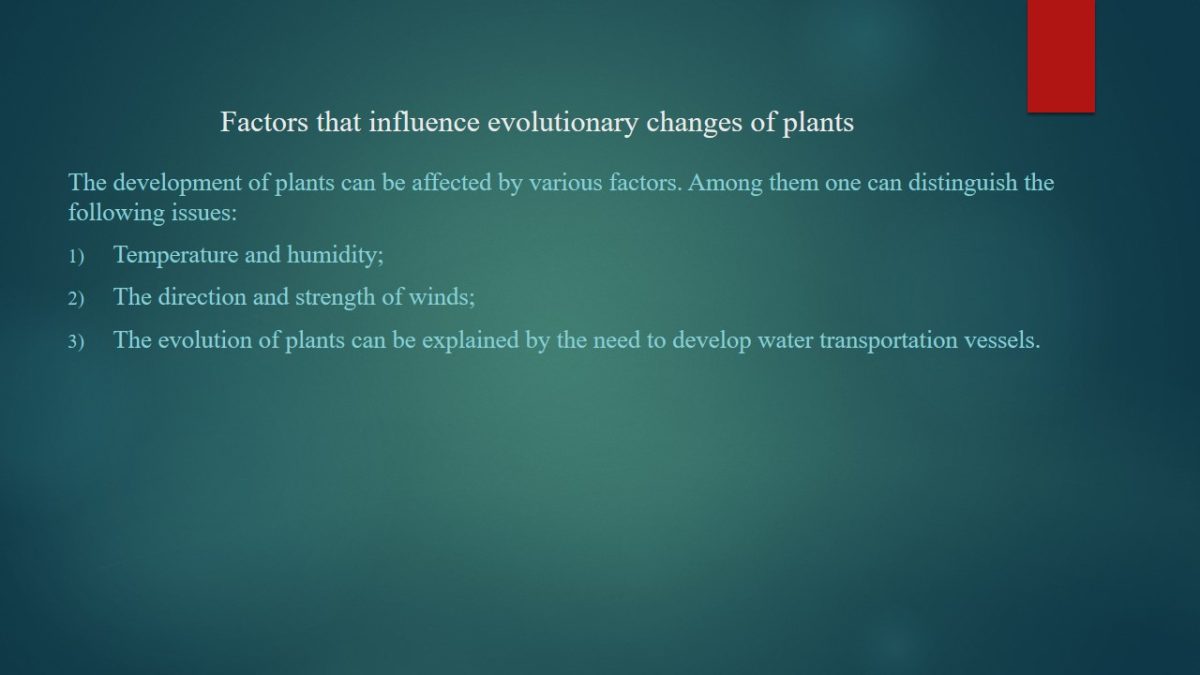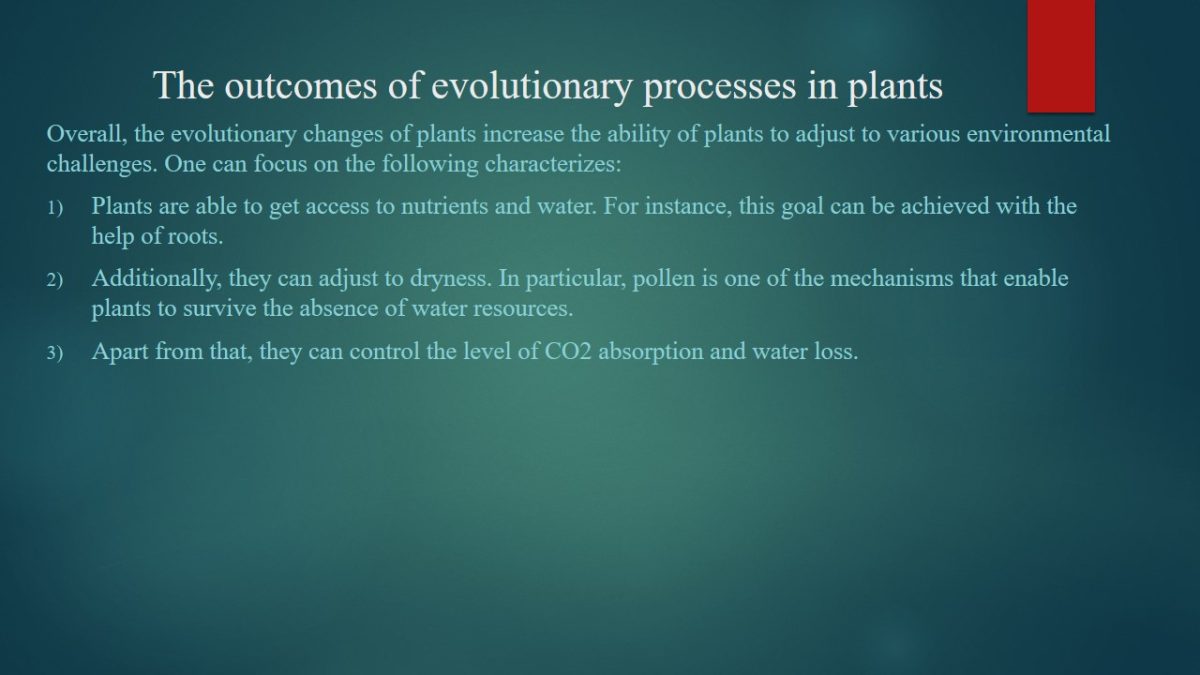Abstract
This presentation will explore the evolutionary changes that took place since the beginning of Earth. Much attention will be paid to the theory of abiogenesis, and the evolution of species at the early stages. Additionally, this presentation will show how animals and plants evolved with time passing. It is critical to examine the factors that underlie these processes and their outcomes. These are the main questions that should be discussed more closely.

Introduction
This presentation is aimed at discussing the evolutionary changes from the beginning of Earth. Moreover, it is important to discuss the evolutionary changes of animals and plants. One should pay attention to the following aspects:
- The transformation of living organisms from the beginning of Earth;
- The outcomes of evolutionary changes in animals;
- The development of plants;
- Current evolutionary changes that can be observed.

Current models explaining the origins of life and evolutionary changes
The theory of abiogenesis
Modern researchers attempt to develop various models that can explain the development of living organisms.
- Living organisms emerged due to the transformation inorganic molecules into organic substances (Hodge, 2009, p. 148).
- Amino acids could be synthesized under the physical conditions that existed on Earth several billion years ago.
- There are substances called that autocatalists that can replicate themselves. In turn, the existence of such substances was critical for the existence of early forms of life.

Last universal ancestor
Currently, researchers believe that the diversity of living forms originates from the so-called last common ancestor. The following chart illustrate the way in researchers describe the development of species. It indicate that different organisms have a single origin (Todar, 2010).
It should be noted that the last common ancestor could have lived more than 3.5 billion years ago. Moreover, scientists believe that it is more likely that the living organisms emerged from a single ancestor, rather than from multiple ancestors (Todar, 2010).

The development of living organisms since the beginning of Earth
- The evolution of living organisms started from simple cells to complex multicellular organisms.
- Simple animals and plants emerged relatively late. At the time, the life on earth existed for more than 3 billion years.
- There is genetic evidence confirming that various species evolved from one another (Mauseth, 2010).

Evolutionary Changes of Animals
- Animals can be described as multicellular eukaryotes. In other words, these organisms are composes of cells that include a nucleus.
- The gradual transformation of species can be attributed to a variety of factors such as natural selection, gene variation, and sexual recombination.
- Much attention should be paid to the external stimuli that prompt the gradual evolution of living organisms.

The outcomes of evolutionary changes in animals
It is possible to identify several major results of evolutionary changes.
One should focus on the following aspects:
- Adaptation to changing environmental conditions;
- Co-evolution and cooperation of species;
- Speciation;
- The extinction of a species.
These are the main aspects that can be singled out.

The evolutionary changes of plants
- Researchers believe that land plants evolved from various green algae. They first emerged approximately 450 years ago.
- The development of plants has been based on the transformation of life-cycles.
- This process has been based on the transformation ferns, bryophytes, and lycopods into angiosperms and gymnosperms (Mauseth, 2010).
- The evolution of plants can be attributed to chromosomal rearrangements, mutations, and epigenetic transformations.

Factors that influence evolutionary changes of plants
The development of plants can be affected by various factors. Among them one can distinguish the following issues:
- Temperature and humidity;
- The direction and strength of winds;
- The evolution of plants can be explained by the need to develop water transportation vessels.

The outcomes of evolutionary processes in plants
Overall, the evolutionary changes of plants increase the ability of plants to adjust to various environmental challenges. One can focus on the following characterizes:
- Plants are able to get access to nutrients and water. For instance, this goal can be achieved with the help of roots.
- Additionally, they can adjust to dryness. In particular, pollen is one of the mechanisms that enable plants to survive the absence of water resources.
- Apart from that, they can control the level of CO2 absorption and water loss.

Current trends in evolutionary changes of animals and plants
- The pollution of air and water leads to the destruction of natural habitat. The major outcome of this trend is the loss of biodiversity.
- It is critical to remember that nowadays many species are on the brink of extinction. Moreover, the number of such species gradually increases.
- Additionally, the activities of human beings adversely impact many ecosystem. The following diagram illustrates the rate of extinction (Species Extinction and Human Population, 2010).
Admittedly, the extinction of species has also existed before.

Conclusion
Overall, the chosen example indicate that evolutionary changes are the result of very complex physical, genetic, and environmental processes. Much attention should be paid to the following issues:
- The existence of a common ancestor.
- The existence of various factors that prompt evolutionary changes.
- The evolutionary transformation of animals and plants can be partly explained by the activities of human beings.

Reference List
Hodge, R. (2009). Evolution: The History of Life on Earth. New York, NY: Infobase Publishing.
Mauseth, J. (2012). Plants and People. New York, NY: Jones & Bartlett Publishers. Species Extinction and Human Population. (2010). Web.
Todar, K. (2010). Important Groups of Procaryotes. Web.